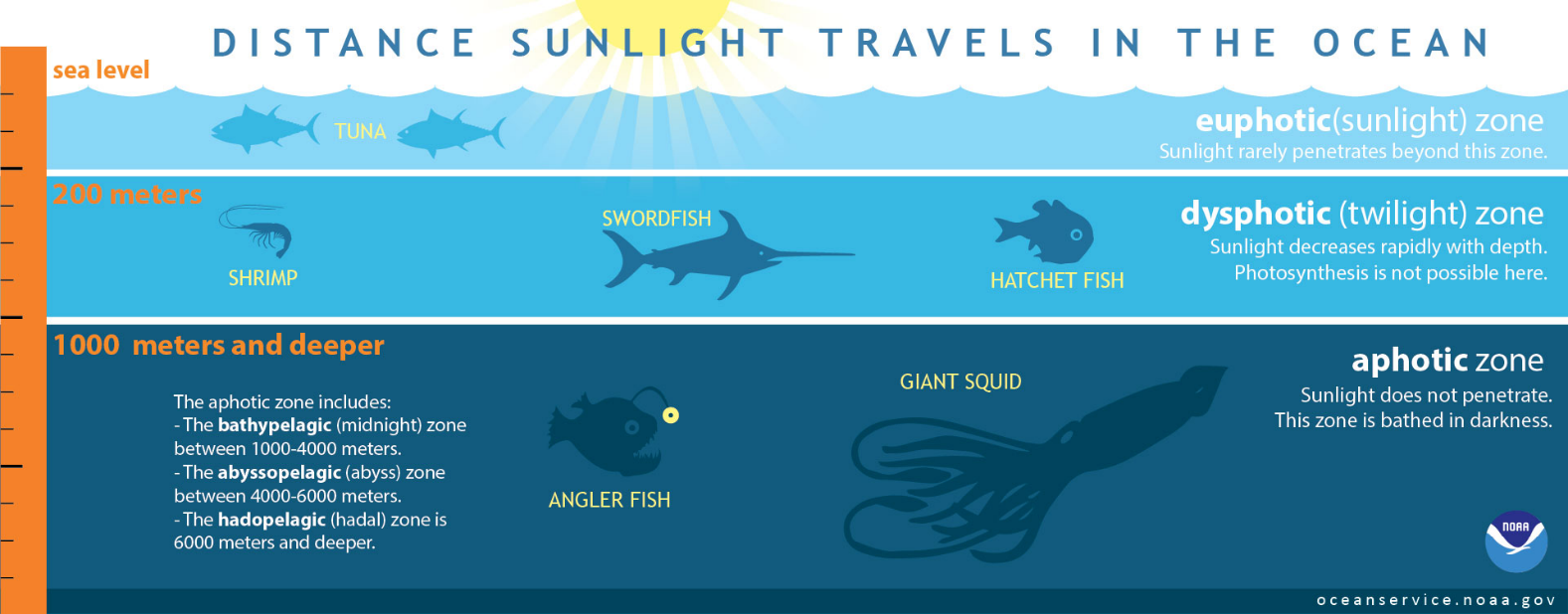Mains Syllabus: GS I - Important Geophysical phenomena such as earthquakes, Tsunami, Volcanic activity, cyclone etc., geographical features and their location-changes in critical geographical features (including water-bodies and ice-caps) and in flora and fauna and the effects of such changes.
Over 21% of the world’s oceans have darkened significantly in the last two decades.
Ocean darkening refers to the reduction in water clarity that limits how far sunlight can penetrate into the ocean.
|
Status of Ocean Darkening |
|
The photic zone in the ocean is the upper layer where sunlight penetrates, which typically extends to about 200 meters (656 feet) below the surface, though the exact depth can vary depending on water clarity and other factors.
